Why remembering matters for healing
- Written by Nancy Berns, Professor of Sociology, Drake University
April 12 marks Holocaust Remembrance Day[1]. Each year communities and schools plan various events such as reading the names of Holocaust victims and survivors, forums of Holocaust survivor speakers, or panel discussions with historians. These events run through an entire week of remembrance.
Such formal days of remembrance are important. As a sociologist who studies grief and justice[2], I have seen how these events and permanent memorials can be both healing and inspirational. I will share four reasons why remembrance activities are important.
1. Telling one’s story
An essential part of healing rests on the ability to tell one’s story[3] – to have someone listen and acknowledge pain and suffering. Scholars have explained how stories help people make sense of their experience. Stories can provide a release of emotion and help one connect to others when learning to live with loss.
How one grieves is dependent on social and cultural contexts[4]. If one is surrounded, for example, by people who refuse to acknowledge someone’s loss[5], it will be a more traumatic experience than being in a culture that recognizes the loss.
Remembrance days, such as the Holocaust Remembrance, and memorials, in particular, can provide opportunities to share stories with a community, especially for those who might have trouble finding people to listen to them[6].
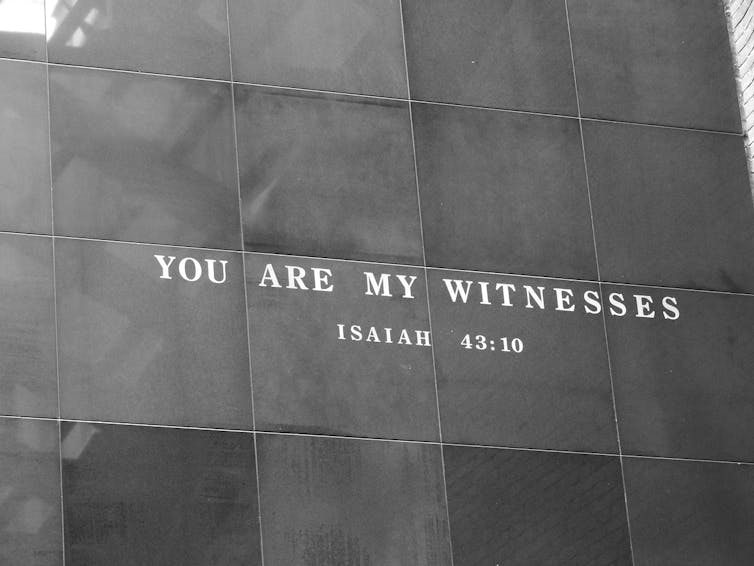 Bible verse on a wall of the Holocaust Museum, Washington, D.C.
hannahlmyers/pixabay.com, CC BY[7][8]
Bible verse on a wall of the Holocaust Museum, Washington, D.C.
hannahlmyers/pixabay.com, CC BY[7][8]
2. Providing public bonds
Research shows that many people develop continuing bonds[9] with individuals who have died. Often people want to keep a deceased loved one’s memory in their lives. Remembrance events can present opportunities and rituals to help in sustaining those connections.
A person establishes private bonds with the deceased, through internal conversations, private rituals, or holding on to symbolic objects. Public bonds, on the other hand, require more people to help make connections, such as telling their story to an audience and hearing others’ stories through films, books, speakers or museum exhibits.
Community events that are scheduled as part of a day of remembrance provide resources for people who may want to develop more public bonds.
3. Documenting history through stories
Storytelling does not just benefit survivors and victims’ families. Individual stories can help the world understand the human toll of mass tragedy.
When entering the Holocaust Memorial and Museum in Washington D.C., for example, visitors are handed an ID card[10] that describes an individual who lived, or died, in Europe during the Holocaust.
Further along, there is a permanent exhibit that includes a large wall of portraits.
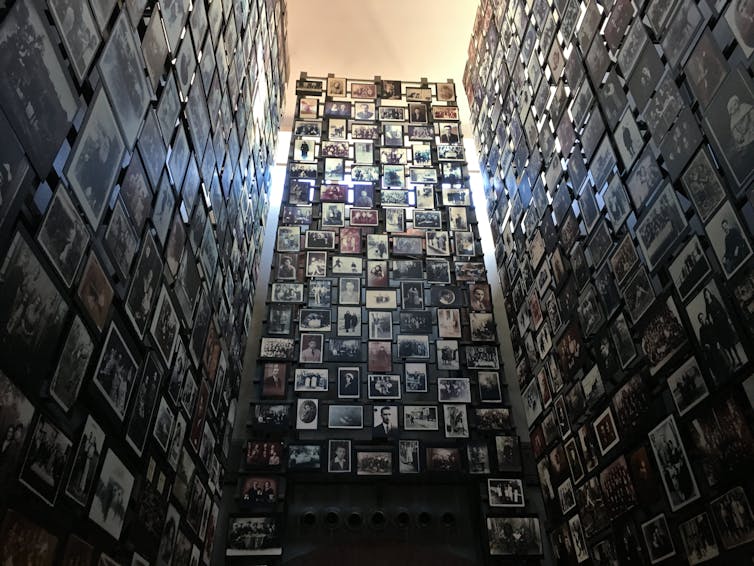 Portrait in the Holocaust Museum in Washington, D.C.
Nancy Berns, CC BY[11]
Portrait in the Holocaust Museum in Washington, D.C.
Nancy Berns, CC BY[11]
Seeing family pictures and knowing how their lives were devastated poignantly brings the tragedy home in a way that numbers alone cannot do. Such stories become the building blocks of history, for they are never simply individual. They are told in specific historical times and they help us understand the relationships between people and society[12].
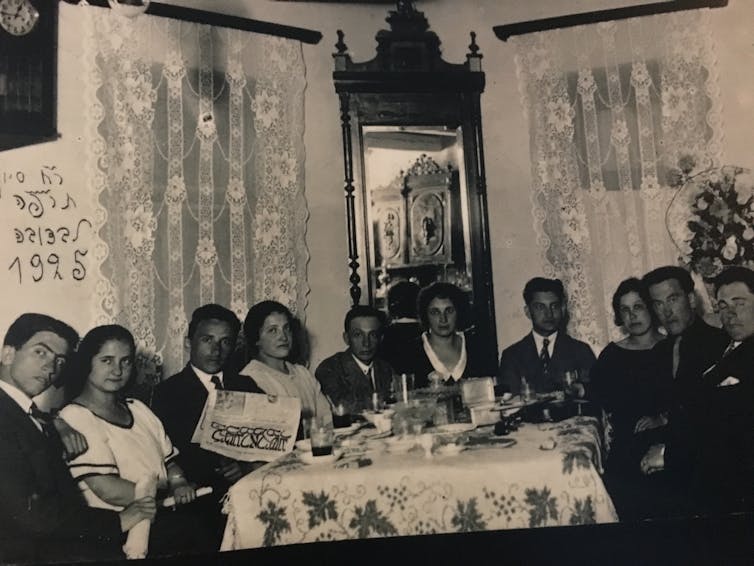 Portrait in the Holocaust Museum in Washington, D.C.
Nancy Berns, CC BY[13]
Portrait in the Holocaust Museum in Washington, D.C.
Nancy Berns, CC BY[13]
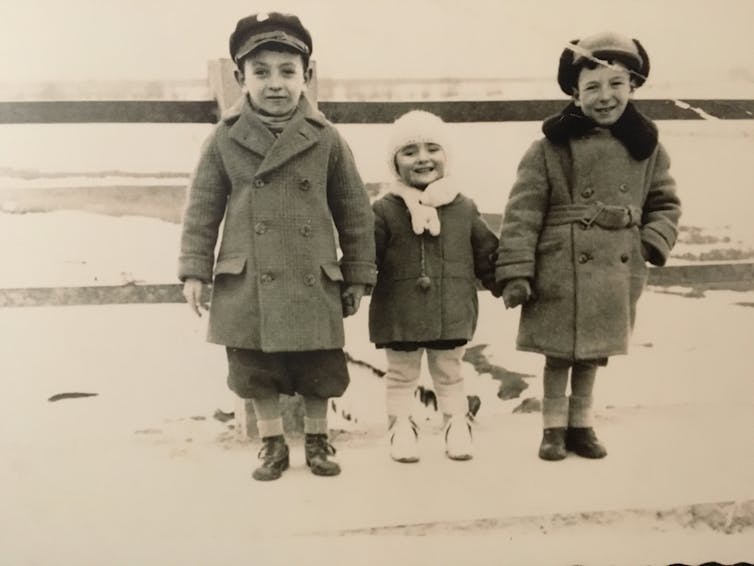 Portrait in the Holocaust Museum in Washington, D.C.
Nancy Berns, CC BY[14]
Portrait in the Holocaust Museum in Washington, D.C.
Nancy Berns, CC BY[14]
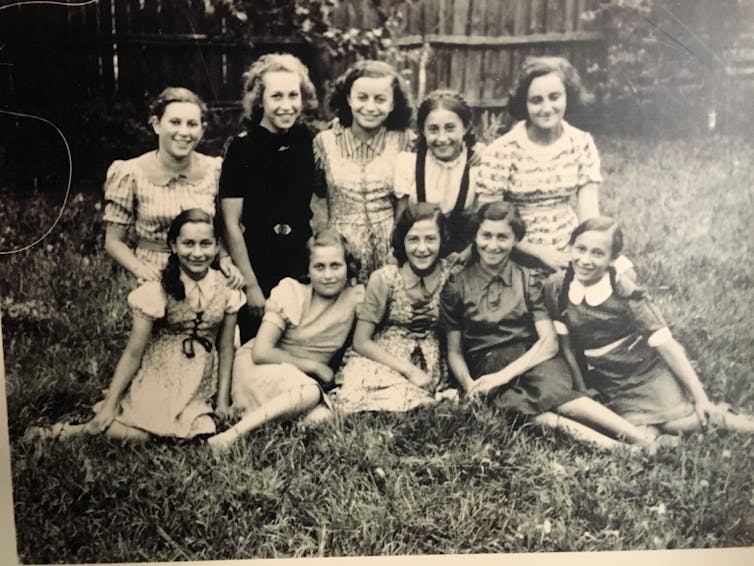 Portrait in the Holocaust Museum in Washington, D.C.
Nancy Berns, CC BY[15]
Portrait in the Holocaust Museum in Washington, D.C.
Nancy Berns, CC BY[15]
4. Inspiring other movements
Stories can also help inspire healing movements for other mass tragedies. One example of this inspiration can be found in the work of Bryan Stevenson, founder and executive director of the Equal Justice Initiative[16]. Stevenson and his team have been helping audiences[17] hear the stories[18] of people who have been victims of racial injustice in the United States.
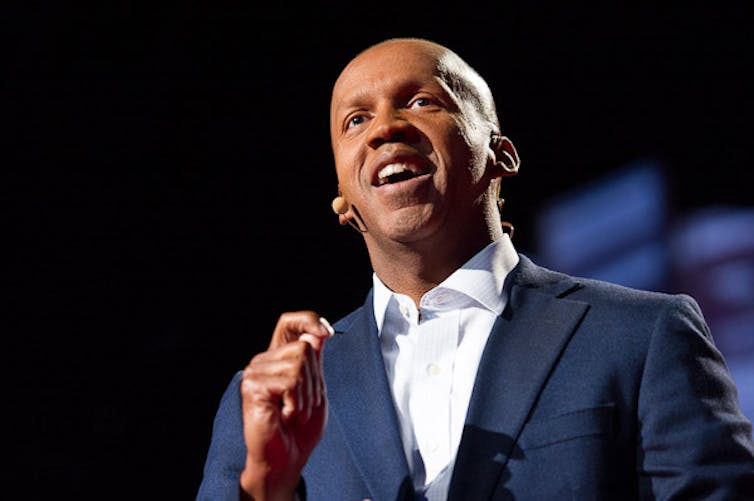 Bryan Stevenson at TED.
James Duncan Davidson, CC BY-SA[19][20]
Bryan Stevenson at TED.
James Duncan Davidson, CC BY-SA[19][20]
Stevenson was inspired by the Holocaust memorials he visited when he went to Germany[21]:
“You can’t go anywhere in Germany without seeing reminders of the people’s commitment not to repeat the Holocaust.”
It led him to build the National Museum for Peace and Justice[22], which will open on April 26 in Montgomery, Alabama. The museum will include a history of lynchings in the United States that occurred between the Civil War and World War II. EJI has documented over 4,000 lynchings that mostly targeted African-Americans. As Stevenson explains[23], the history of terrorism through lynching shapes the context of racial injustice in the United States. The museum aims to open up conversations and memorialize lives lost.
Conversations about a painful past are not something to be feared but rather remembered and shared. Healing does not come by closing the books and turning away from individual stories of trauma. Healing starts when the devastating consequences of injustice and loss are seen and acknowledged.
References
- ^ Holocaust Remembrance Day (www.ushmm.org)
- ^ sociologist who studies grief and justice (www.nancyberns.com)
- ^ tell one’s story (sites.ualberta.ca)
- ^ dependent on social and cultural contexts (www.ncbi.nlm.nih.gov)
- ^ refuse to acknowledge someone’s loss (www.researchpress.com)
- ^ have trouble finding people to listen to them (www.temple.edu)
- ^ hannahlmyers/pixabay.com (pixabay.com)
- ^ CC BY (creativecommons.org)
- ^ continuing bonds (www.deathreference.com)
- ^ an ID card (www.ushmm.org)
- ^ CC BY (creativecommons.org)
- ^ relationships between people and society (www.cornellpress.cornell.edu)
- ^ CC BY (creativecommons.org)
- ^ CC BY (creativecommons.org)
- ^ CC BY (creativecommons.org)
- ^ Equal Justice Initiative (eji.org)
- ^ helping audiences (www.penguinrandomhouse.com)
- ^ hear the stories (www.ted.com)
- ^ James Duncan Davidson (commons.wikimedia.org)
- ^ CC BY-SA (creativecommons.org)
- ^ Germany (www.charlotteobserver.com)
- ^ National Museum for Peace and Justice (museumandmemorial.eji.org)
- ^ As Stevenson explains (lynchinginamerica.eji.org)
Authors: Nancy Berns, Professor of Sociology, Drake University
Read more http://theconversation.com/why-remembering-matters-for-healing-94565


